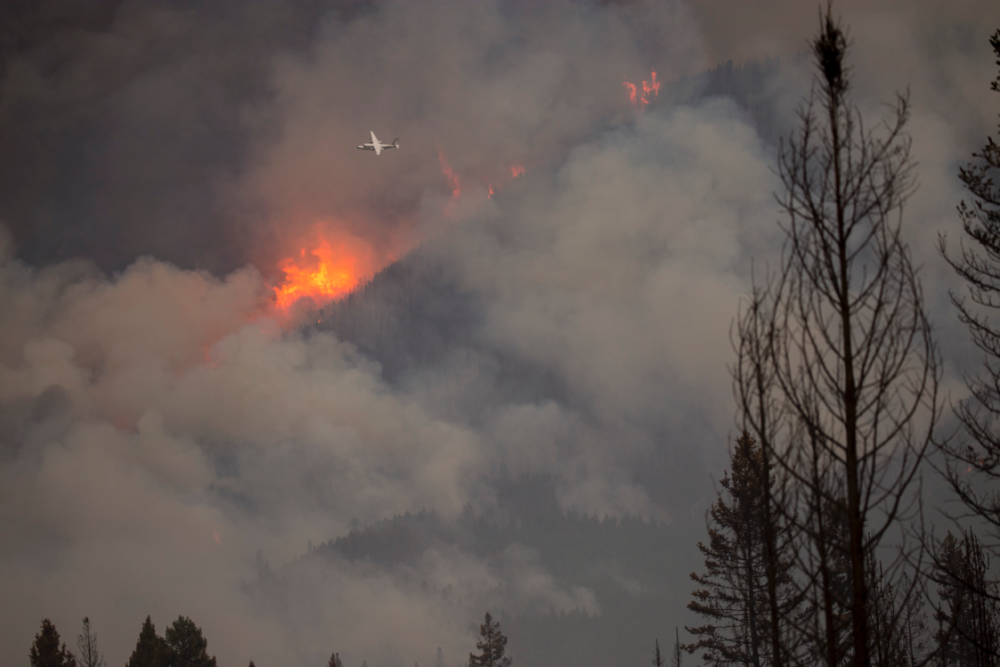Forest Service wants to log 5,600 acres, replant 16,000 burned by Rice Ridge fire
Posted: July 5, 2018Source: Missoula Current
BY LAURA LUNDQUIST

Smoke from the Rice Ridge fire produced particulate readings in Seeley Lake above anything ever recorded in Missoula County. (inciweb.com)
The Lolo National Forest wants make the best of last year’s 160,000-acre Rice Ridge fire by logging some trees.
This week, the forest released an environmental assessment proposing to log more than 5,600 acres and replant more than 16,000 acres within the burn zone around Seeley Lake.
The document is available for public comment, and the Lolo forest will host a related open house at the Seeley Lake Chamber of Commerce at 5 p.m. on June 27.
“Public response, along with the analysis of effects, will inform my decision on how to proceed forward with the project,” Sara Mayben, the acting forest supervisor, said in a statement.
The Rice Ridge fire burned through more than a third of the land that the Lolo Forest Plan identified for timber production, including much of the proposed 61,300-acre Center Horse Restoration Project area.
So forest managers want to take advantage of what timber they can salvage from the area.
But they’re under the gun.
Dead and dying timber deteriorates below manufacturing standards within two to three years. So much of the value can be lost if logging operations are delayed.
For that reason, forest managers are trying to fast-track the salvage operation. If they can get the chief of the Forest Service to grant an Emergency Situation Determination, the public will not be allowed to object to the project once Mayben makes her final decision.
The entire project, including replanting, would take eight to 10 years, although the salvage would occur during the first three years.
The Forest Service is limiting the salvage logging operations to avoid steep terrain, sensitive areas near lakes and streams, or known wildlife habitat. The area is home to bull trout, grizzly bears and Canada lynx, but also other species that use tree snags for dens or nests.
Road construction is always a contentious aspect of timber or salvage projects because roads add sediment to streams and destroy the wild nature of roadless areas.
During scoping in January, several of the 38 public comments opposed any road construction to facilitate salvage work. So the Forest Service developed one project alternative that would not add any new roads and would harvest only 2,700 acres. Alternatively, some commenters wanted more roads and logging.
As a result, the proposed alternative would allow the construction of 16 temporary roads for greater access into burned areas. They would be decommissioned following logging and replanting. Workers would also clear all trees within 150 feet of any active road in the interest of public safety.
Last July, multiple wildfires burned a total of 227,000 acres on the Lolo National Forest. The Rice Ridge fire was the largest, accounting for almost two-thirds of the total area burned. Residents of Seeley Lake were under evacuation orders for weeks, and subjected to unhealthy air for even longer.
But Lolo forest managers are looking at other burned areas too. Earlier this year, they applied for emergency determinations on burned zones where similar environmental assessments seek to implement salvage logging, including the Sunrise fire near Superior and the Sheep Gap fire near Plains.
